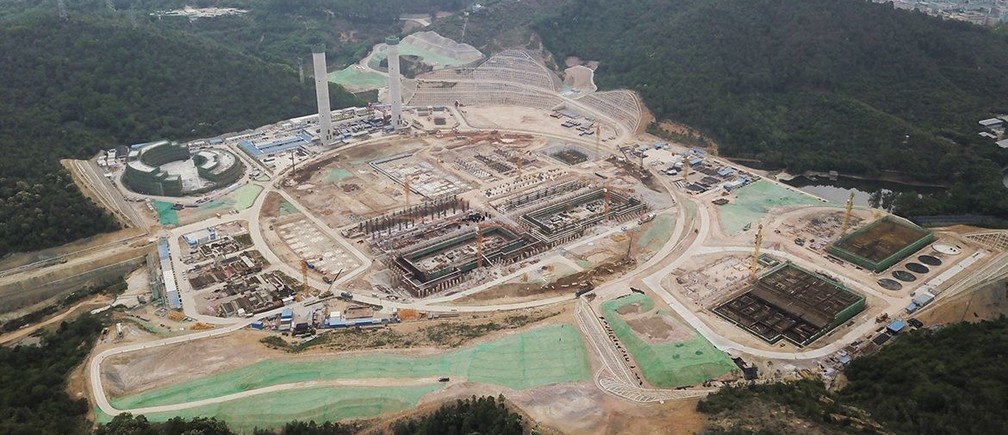The architects of what is set to be the world’s largest waste-to-energy plant describe their creation as simple, clean and iconic. It’s a mammoth structure which sits on the outskirts of the city of Shenzhen in southern China and once operational will process up to 5,000 tonnes of waste each day.
With a population of 20 million people, the city produces a lot of waste: about 15,000 tonnes daily according to SHL Architects, which will be used by the plant to generate electricity.
What’s the World Economic Forum doing about the transition to clean energy?
Part of the attraction of waste-to-energy technology is that it’s a dual-purpose solution – it rids urban areas of their growing waste problem, while generating electricity as a byproduct.
But the Shenzhen plant and has met with opposition from local residents and environmental groups who fear it will emit dangerous levels of dioxins and other toxins.
How does waste-to-energy work?
The process captures heat from incinerating unwanted waste materials, which drives a turbine to generate electricity. Burning waste releases harmful CO2 emissions into the atmosphere, but according to the architects, at half the level of an average landfill site – where much of Shenzhen’s waste ends up.
China has the largest installed waste-to-energy capacity of any country, with more than 300 plants in operation. This capacity has increased annually by 26% over the past five years, compared with just 4% average growth in capacity in OECD countries.
Interest in waste-to-energy technologies is growing, with the global market estimated to be worth $40 billion by 2023, according to the World Energy Council.
The world’s population will reach 9.8 billion by 2050, according to UN predictions, with 68% of those people living in cities, making solutions that remove urban waste and produce energy attractive to investors.
Wasted energy
China generates more waste than any other country, according to World Bank figures. But countries and cities around the globe face similar challenges.
Once constructed, Shenzhen’s new plant will combust roughly a third of the city’s daily domestic waste. It will also generate some renewable energy via 40,000 square metres of solar panels on its roof.
While the new plant offers an alternative to the city’s overloaded landfill sites and makeshift waste dumps, its green credentials have been called into question. A residents’ group which fears that landfill waste ash and airborne pollutants from the incinerator will end up in a nearby reservoir has launched a legal challenge to force the site to be relocated to a less densely populated area.
Other proposed waste-to-energy projects around China – Hubei, Hunan, Guangdong, Shandong, Hainan, Jiangxi, and Zhejiang provinces – have also been met with protests.
And while such waste-to-energy projects provide a temporary solution to China’s growing trash problem, it is not a long-term fix. The Shenzhen plant has capacity to cope with about a third of the waste currently produced by the city, but the amount of waste is increasing by 7% a year.
A sustainable future lies in changing behaviour to reduce the amount of waste produced, and working towards a circular economy, where discarded items are increasingly reused and recycled.
Source: weforum






